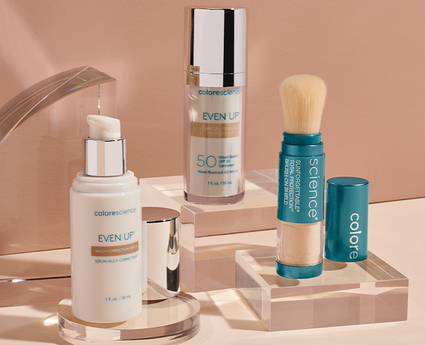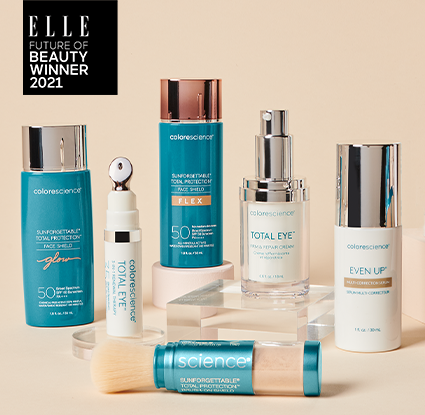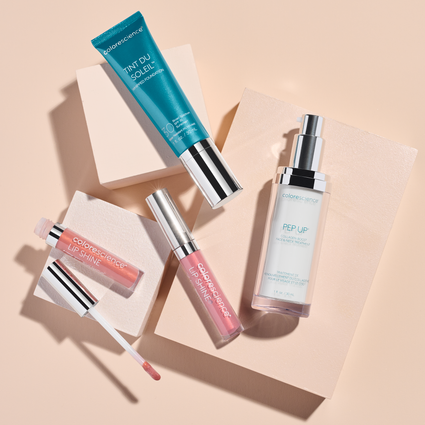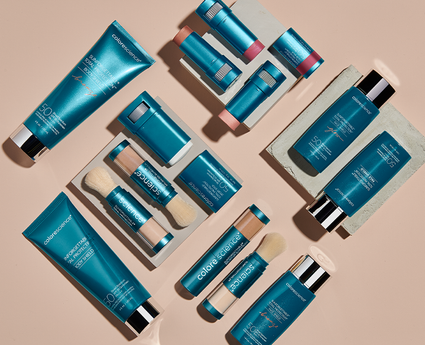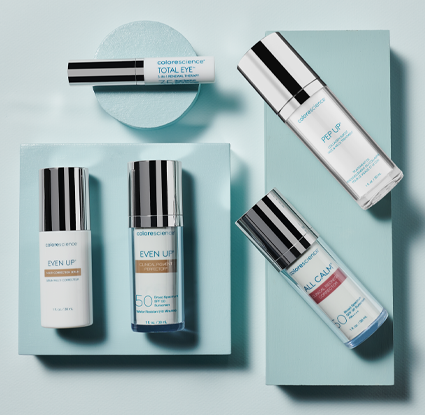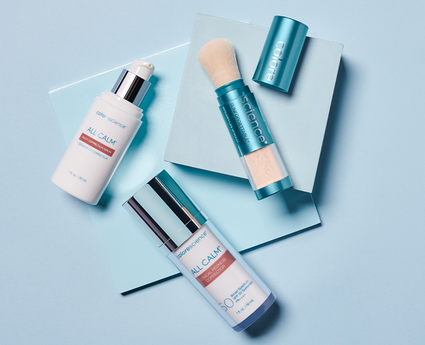Hyperpigmentation 101
It strikes without warning. The once even, beautiful skin on your face now has an unfamiliar dull shadow. At first you think it must be the lighting or perhaps dirt on your face, and then it hits you… these are permanent spots known as hyperpigmentation to professionals. Hyperpigmentation is the 2nd largest skin concern for women and men in the US and one that affects over 30 million people worldwide*.

Struggling with hyperpigmentation?
Diminish the appearance of discoloration with Even Up® Clinical Pigment Perfector® Sunscreen!
SHOP NOWWhat Is Hyperpigmentation?
Hyperpigmentation is a common, usually harmless condition in which patches of skin become darker in color than the normal surrounding skin. This darkening occurs when an excess of melanin, the brown pigment that produces normal skin color, forms deposits.
Unfortunately, there is currently no cure for this condition, although there are several treatments and products that can help contain the problem by minimizing the appearance of pigmentation. Before we jump into in-office treatments and products, let’s take a moment to understand melanin and its relationship with hyperpigmentation.
What Is Melanin?
elanin is essentially COLOR. More specifically, a dark brown to black pigment. It’s what gives our skin its tone, provides color to our hair and determines our eye color. There is even a form of melanin found in areas of the brain. For the purposes of this article, we will focus on the melanin in your skin and how it acts as a “protector”.
What Causes Hyperpigmentation?
The UV radiation from the sun is the biggest culprit when it comes to brown spots on the skin. The job of melanin is to “protect” our skin from injury (any exposure to the sun is interpreted by our body as an injury) and works hard to keep UV rays from depositing energy onto and into the skin. Unfortunately, the UV radiation can sometimes be too much for this Melanin to handle, so the skin reacts in a build up of darker cells that act as a protector in that specific over-exposed area.
Did you know? There are other factors besides the sun that can contribute to the development of Hyperpigmentation: infrared heat and hormones. Infrared heat comes from any source that produces heat - cell phones, computers, ovens etc. And hormones… we all know there’s no need for an explanation here, but this is definitely a factor.
Containing Hyperpigmentation Through Treatment
It's important to mention that I too suffer from hyperpigmentation, and it has been an ongoing condition that I address. Not only do I understand the science behind how and why it occurs, but, I know the frustration of trying to manage it through product and treatment. I’ve tried many procedures and products in my search to manage the appearance of my own brown spots and skin. It is important for each of us to explore our options and determine what is best based on our ethnicity, skin concerns, skin type, etc.
Now let’s dive into what is available to you so you can be armed with the information you need to find the right options for you and your skin. We have a network of skincare specialists that offer these in-office procedures to set you on the path to even skin.
Watch this video to hear Melanie's story of struggling with hyperpigmentation
In-office Treatment Options
There are several in-office options available to treat pigmentation:
- - I.P.L. or Intense Pulsed Light: the most popular treatment for pigmentation. How it works is a beam of light brings spots to the surface and causes them to gently slough off. It’s a great option, but be prepared to have redness, maybe minor swelling and a darkening of the pigmentation a few days after the treatment.
- - Fractional Laser Treatment: It’s the bridge between an ablative and non-ablative procedure in which a laser beam is used to minimize the appearance of pigmentation. You will be red for a few days.
- - Micro-needling: It’s a device with tiny needles that prick the skin to improve the appearance from acne scars and pigmentation. You may be red up to 48 hours post-treatment.
- - Chemical Peels: Typically physicians require that you do 3-6 peels for a period of time, in efforts to have the best outcome. A peel uses acids to cause your skin to turn over and peel off the top layers of skin containing pigmentation (imagine a snake losing it’s skin) Depending on the peel, you may peel up to 3-5 days along with redness.

Pigmentation Products
Like in-office treatments, there are many cosmetic skincare products on the market that work to improve and/or correct and cover pigmentation. Here at Colorescience we have many options that can assist you in looking beautiful while improving the look of your skin. Our award winning Even Up is a clinical pigment perfector which treats, conceals and protects - all in one amazing product! This is a must-have for anyone suffering from skin pigmentation! The product clinically works to improve the appearance of your pigmentation while providing you the protection of SPF 50 and that's not all - it gives the immediate coverage you need to feel confident.
Why Colorescience Has You Covered
Regardless of the procedure you and your skincare professional decide for treatment, it’s imperative that you know that SUNSCREEN is your best defense against pigmentation and MUST be used daily. It’s important to remember sunscreen not only while you go through the treatments, but it should be part of your daily skin routine 365 days a year.
Looking for sunscreen for your sensitive skin?
Protect your skin while still looking radiant with Colorescience!
SHOP NOW
There are a lot of of conversations happening about the negative effects of chemical sunscreens so here at Colorescience we make it easy by leaving those ingredients out. We use only zinc oxide and titanium dioxide in our entire line of cosmetics. These physical filters block out UVA and UVB rays, plus, these natural ingredients help keep the skin cool by refracting and reflecting light (versus absorbing it). Colorescience 100% healthy Sunforgettable Brush On Sunscreen SPF 50 is by far the best healthy option to meet your sun protection needs. This portable brush was designed to go over the top of your make-up and make application easy.
The most important thing you can do for your skin is SUNSCREEN, daily! It’s essential that you get into the habit of putting on sunscreen (SPF 30 or higher) EVERY morning before you go outside and commit to re-application every two hours. Sunscreen is not only the very best thing you can put on your face to prevent pigmentation and premature aging, but it guards against skin cancer.
Putting It All Together
So now the power is in your hands, but, I hope I've provided you with the information needed to take a step towards healthy, beautiful looking skin. Time to set up an appointment with a skincare specialist and get a treatment plan customized for your skin.
Remember, with Colorescience you never have to compromise health for lasting beauty.
References: *Kline Research, Internet; Aura Medical Clinic: Excessive Pigmentation

